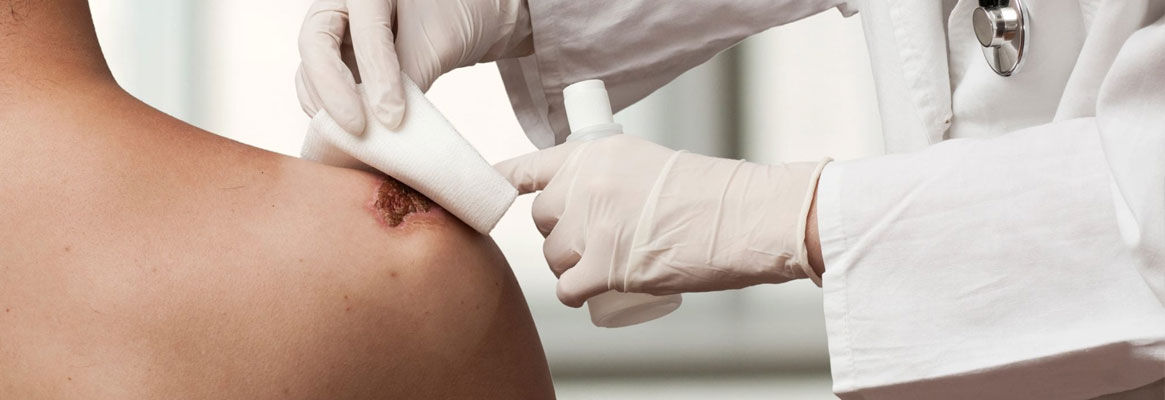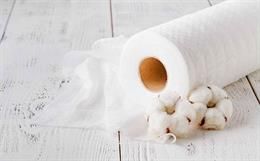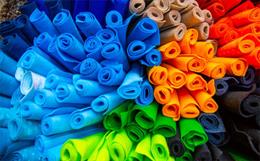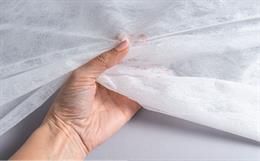Introduction
The use of nonwovens in medical arena goes back to the timeof Second World War when need for new and large volumes of medical product had arisen. In several reports published, nonwovens were regarded as the most effectivematerials for bacterial barriers. They were also found superior to linens inthe reduction of air-borne contamination.
After significant development of nonwovens, they weredesigned in a way to suit the medical needs and give a performance much betterthan their woven counterparts in terms of cost, effectiveness, disposabilityetc. In hospitals, cross-contamination is always one of the biggest problems which were attributed largely to re-using of woven gowns, masks and other similar articles which would get contaminated and potentially spread the germs. The advent of nonwovensfacilitated the development of a more cost effective alternative which wasdisposable and reduced the problem of cross-contamination greatly.
Why Nonwovens for Medical Products?
Nonwovens are known for delivering superior performance inspecialized tasks because they can be designed the way an application needsthem to be. The properties which make nonwovens the best choice for medical products are:
- Excellent barrier properties
- Superior efficiency
- Better performance (comfort, thickness and weight, water vapor transmission, air permeability etc.)
- Increased protection for user (better physical properties like tensile, tear resistance, abrasion resistance etc.)
- Less potential for cross contamination
Wound care was and still is the primary use for medical andsurgical nonwovens. Nonwovens find applications in a variety of products viz. absorbent pads, incontinence products, apparel for patients and staff. Babydiapers, bed linen and blankets, burn dressings, gowns, disposable underwear,dressings, drug delivery devices, face masks, filter media, nasal strips,pillows, shoe covers, sponges, sutures, tissue scaffolds, towels, wraps etc.
These products are effectively employed in use inambulances, consultation couches, ICUs, laboratory, operating rooms, wards etc.
Fig 1: Medical Nonwovens
Material used in medical nonwovens:
Fibers
The fibers used in medical nonwovens can be classified in natural and synthetic categories. The natural fibers used are wood-pulp, cotton and rayon. Wood pulp is used for its obvious absorbency, bulk and low cost. Cotton and rayon are good to be used directly on wounds. They have good absorbency and make excellent nonwovens.
The reasons natural fibers make excellent medical nonwovens are:
- They are highly absorbent of exudate and blood
- Excellent breathability
- Good aesthetic characteristics
- Easy launderability and can be sterilized
- Excellent dimensional stability and high operability temperature ~ 175 deg C
- Biodegradable
- Excellent drape and conformability
- Good heat resistance
- Excellent water retaining capacity
- Nonallergenic and nonirritant fibers
The synthetic fibers mostly used in this application are: polypropylene for its excellent rheological characteristics, hydrophobicity which is desired in some systems where barrier properties are required, low cost, bicomponent fibers which are widely used in thermal bonding and added functionality and polyester when strength, mechanical properties and ease of sterilization are of prime importance. Synthetic fibers also account for the products strength, solvent resistance, static dissipation and many other desirable properties.
The properties of synthetic fibers which are required in many applications:
- Hydrophobicity: to be able to act as a barrier fabric
- Easy to process
- Cost effectiveness
- Better performance due to strength, low density
- Easy to dispose, not hazardous
Manufacturing Processes for Medical Nonwovens
Web Formation: The most popular techniques for medical nonwovens are spunbonding, meltblowing and their composites (SMS) in specific end uses. Spunbonding is used when more strong webs are needed. Spunbonded webs are strong in both machine direction (MD) and cross direction (CD). They are soft, porous and dimensionally stable. Spunbonding is mostly used for products like face masks, head wears, shoe covers, bed linens and disposable clothing etc. Dry laying, wet laying and carding are used for different web properties depending on web thickness required, speed of bonding technique to be used etc. Carding is adapted for lightweight web production for technical and hygienic products. Carding produces very high quality webs at very high speeds.
Bonding is carried out by many methods including thermal bonding for synthetic fibers and their blends. Hydroentangling as the fastest growing bonding technique is used explicitly in medical nonwovens for that textile-like hand and feel that's desirable in products like gauzes, dressings, hospital apparel etc.
Needlepunching finds application in bonding various fibers or webs of medium thickness. Needlepunching is fast, effective and often chosen technique for varied applications. It is also cost effective. Apart from all these techniques, stitchbonding is also used. Chemical bonding is often used for making elastic nonwovens.
Processes for Natural fibers: for cotton and rayon, web may be
formed by air laying/wet laying or carding. The natural fibers are often
hydroentangled to give them most fabric-like properties. While the end product obtained is excellent in properties, it is rendered expensive as compared to synthetic
fibers. Cotton is most often mercerized and bleached to enhance its purity for
a better acceptance in medical and hygiene areas. Cotton also poses
difficulties in processing because of its high dust levels. Natural fibers find
best applications in products like surgical gowns, swabs and drapes, gauze,
disposable clothing, bandages, wound dressings etc. Cotton processing may include bonding techniques like resin bonding (for backing materials), thermal
bonding of polyolefins +cotton blends and hydroentangling for highly absorbent products.
Processes for Synthetic Fibers: Synthetic fibers are most often blended with cotton/rayon. They are spunbonded and then bonded by any suitable bonding technique. Synthetic fibers may also be meltblown. For applications like filters, face masks etc, meltblown webs are preferred because of the small fiber diameters and excellent filtration efficiencies.
While synthetic fibers can be bonded by any technique effectively, it is mostly determined by their end use.
Post Processes
Post process for medical nonwovens is to give the product a suitable finish for its specific end use. The different types of finishes used in medical nonwovens are:
- Soil Release Agents: for bed linens, gowns and apparel which are designed for multiple usages. May also be used on curtains, blankets etc.
- Softeners: to make the webs feel soft against the skin. May be used for disposable undergarments, pillows, bed sheets etc.
- Water repellents: used for bed sheets for kids, barrier apparel etc.
- Flame Retardant Finishes: used for bed linens, curtains, apparel, lab coats etc.
- Antibacterial Finish: very commonly applied to gauzes, dressings and sutures. The most popular one is silver nanocrystal finish.
- Resin and Hand Builders: used for apparel, gowns, bed linens etc.
Conclusion
Medical textile market is totally saturated with nonwoven products today. Nonwovens, because of their easily modifiable properties and excellent performance have become indispensable in this field. Medical and Hygiene sectors combined together consume more than 90% of the total nonwoven production in US (Source: INDA). On the other hand, in developing countries of Asia, Africa and South America, demand for medical nonwoven is increasing significantly as a result of a fast-growing, increasingly urbanized, young, health-conscious population. In future, the demand of nonwovens in medical field is expected to grow steadily.







